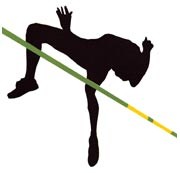
Reversing resistance | Nature Reviews Drug Discovery
- Select a language for the TTS:
- UK English Female
- UK English Male
- US English Female
- US English Male
- Australian Female
- Australian Male
- Language selected: (auto detect) - EN
Play all audios:

Access through your institution Buy or subscribe > Obatoclax can restore sensitivity to several new anticancer drugs In the transformation of normal cells to cancer cells, the abrogation
of apoptosis has a central role. The BCL2 family of proteins, comprising both pro-apoptotic (BAX, BAK) and pro-survival (BCL2, BCL-XL, MCL1 and BCL-W) members, are pivotal players in this
process. Protein–protein interactions between the two sides, mediated by the BH3 domain of pro-apoptotic members, which inserts into a groove in the in the surface of the pro-survival
members, control the permeability of the mitochondrial outer membrane, and the deadly release of cytochrome _c_. This is a preview of subscription content, access via your institution ACCESS
OPTIONS Access through your institution Subscribe to this journal Receive 12 print issues and online access $209.00 per year only $17.42 per issue Learn more Buy this article * Purchase on
SpringerLink * Instant access to full article PDF Buy now Prices may be subject to local taxes which are calculated during checkout ADDITIONAL ACCESS OPTIONS: * Log in * Learn about
institutional subscriptions * Read our FAQs * Contact customer support ORIGINAL RESEARCH PAPER * Nguyen, M. et al. Small molecule obatoclax (GX15-070) antagonizes MCL-1 and overcomes
MCL-1-mediated resistance to apoptosis. _Proc. Natl Acad. Sci. USA_ 104, 19512–19517 (2007) Article CAS Google Scholar Download references Authors * Alexandra Flemming View author
publications You can also search for this author inPubMed Google Scholar RIGHTS AND PERMISSIONS Reprints and permissions ABOUT THIS ARTICLE CITE THIS ARTICLE Flemming, A. Reversing
resistance. _Nat Rev Drug Discov_ 7, 119 (2008). https://doi.org/10.1038/nrd2525 Download citation * Issue Date: February 2008 * DOI: https://doi.org/10.1038/nrd2525 SHARE THIS ARTICLE
Anyone you share the following link with will be able to read this content: Get shareable link Sorry, a shareable link is not currently available for this article. Copy to clipboard Provided
by the Springer Nature SharedIt content-sharing initiative
